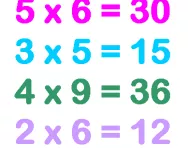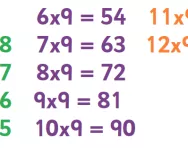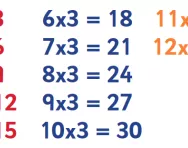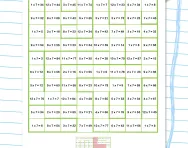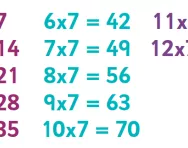TheSchoolRun.com closure date
As we informed you a few months ago, TheSchoolRun has had to make the difficult decision to close due to financial pressures and the company has now ceased trading. We had hoped to keep our content available through a partnership with another educational provider, but this provider has since withdrawn from the agreement.
As a result, we now have to permanently close TheSchoolRun.com. However, to give subscribers time to download any content they’d like to keep, we will keep the website open until 31st July 2025. After this date, the site will be taken down and there will be no further access to any resources. We strongly encourage you to download and save any resources you think you may want to use in the future.
In particular, we suggest downloading:
- Learning packs
- All the worksheets from the 11+ programme, if you are following this with your child
- Complete Learning Journey programmes (the packs below include all 40 worksheets for each programme)
You should already have received 16 primary school eBooks (worth £108.84) to download and keep. If you haven’t received these, please contact us at [email protected] before 31st July 2025, and we will send them to you.
We are very sorry that there is no way to continue offering access to resources and sincerely apologise for the inconvenience caused.
Teachers’ tricks for learning times tables

Visualise the numbers
Children need to practise counting in sequences before they can really understand times tables.
In class your child’s teacher might use Unifix, connecting coloured cubes which help children make patterns, count and solve mathematical problems. You can buy a set of Unifix cubes yourself and get your child to make ‘sticks’ of numbers; for example, if they are learning their 3x table, they will need to make a stick of 3, one of 6, 9, 12 and so on. They can then point at the correct stick as they count up in threes. Seeing the numbers as visual quantities will help to embed the correct sequence in their minds.
As an alternative to mathematical cubes, you can use building blocks (all the same size) or get your child to colour in squares on graph paper.
Colour in a number square
Print off a hundred number square – basically a 10 by 10 grid with the numbers 1 to 100 on it. If your child is learning the 4x table, get them to count in 4s, colouring each number as they go. This will help them to start memorising the answers in the 4x table. They will also find that a pattern will ‘miraculously’ appear!
You can also download a free, colour-coded multiplication square that goes up to 12x12 to help your child spot multiplication number patterns.

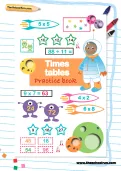
Get FREE Times Tables Resources
- Printable and interactive worksheets
- Practice workbook
- Games pack
Play times tables games
Using coloured card, you can make simple games to help your child learn their times tables.
For instance, cut some card into 24 identical pieces, and write out all the questions for one times table on 12 of the cards. Then write the answers on the other 12 cards. Spread them out on a table and see if your child can match them all up correctly. Once they are more confident, time them with a stopwatch. See if they can try to beat their own record each time they do it!
Use speed grids
Using a speed grid is a good way to evaluate which times tables your child still needs to learn.
Download and print a blank 10 x 10 times tables grid of squares from TheSchoolRun. Now fill the top row with any one-digit numbers and fill the far left-hand column with any one-digit numbers. Explain to your child that they need to fill the whole grid by multiplying each of the numbers in the left-hand column by each of the numbers in the top row. Once they get more confident, try timing them to see if it increases their speed.
Single out the tricky one!
We all have a few particular times table questions that we get stuck on. If your child finds a particular equation difficult, for example 7 x 8 = 56, get them to ‘single it out’ by drawing it in bubble writing with marker pens on a big piece of paper. Stick it up in their room so they see it every time they walk in. You could get them to say it in a silly voice every time they see it, which should help them to remember it even better!
Talk about factors and multiples
Don’t forget to use correct times table vocabulary when you talk to your child (they will need to know the right language in the SATs).
First of all, show them a times table number sentence, such as 6 x 4 = 24. Explain that 6 and 4 are factors of 24, and that 24 is a multiple of 6 and a multiple of 4.
Another good way to demonstrate this is to show the whole 6x table written out and point to all the answers at the end, explaining that all these numbers are multiples of 6. To test your child’s understanding (after they have learnt the times table), give them this times tables worksheet, which requires them to identify the numbers they think are multiples of 6.
